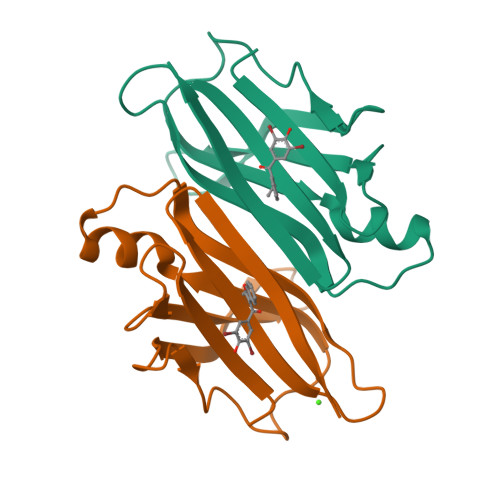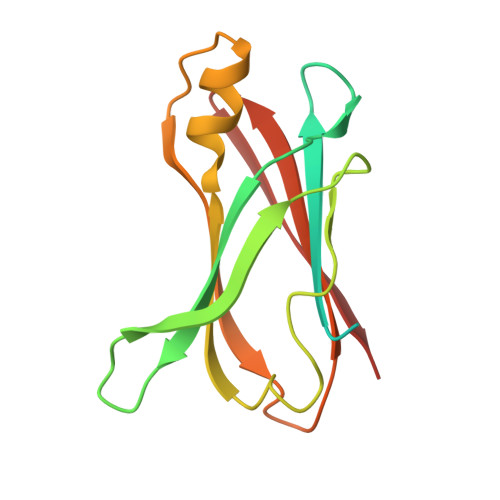Benziodarone and 6-hydroxybenziodarone are potent and selective inhibitors of transthyretin amyloidogenesis.
Mizuguchi, M., Yokoyama, T., Okada, T., Nakagawa, Y., Fujii, K., Nabeshima, Y., Toyooka, N.(2023) Bioorg Med Chem 90: 117370-117370
- PubMed: 37311373
- DOI: https://doi.org/10.1016/j.bmc.2023.117370
- Primary Citation of Related Structures:
8II1, 8II2, 8II3, 8II4 - PubMed Abstract:
Transthyretin amyloidosis is a progressive systemic disorder that is caused by the amyloid deposition of transthyretin in various organs. Stabilization of the native transthyretin is an effective strategy for the treatment of transthyretin amyloidosis. In this study we demonstrate that the clinically used uricosuric agent benziodarone is highly effective to stabilize the tetrameric structure of transthyretin. An acid-induced aggregation assay showed that benziodarone had strong inhibitory activity similar to that of tafamidis, which is currently used as a therapeutic agent for transthyretin amyloidosis. Moreover, a possible metabolite, 6-hydroxybenziodarone, retained the strong amyloid inhibitory activity of benziodarone. An ex vivo competitive binding assay using a fluorogenic probe showed that benziodarone and 6-hydroxybenziodarone were highly potent for selective binding to transthyretin in human plasma. An X-ray crystal structure analysis revealed that the halogenated hydroxyphenyl ring was located at the entrance of the thyroxine binding channel of transthyretin and that the benzofuran ring was located in the inner channel. These studies suggest that benziodarone and 6-hydroxybenziodarone would potentially be effective against transthyretin amyloidosis.
Organizational Affiliation:
Faculty of Pharmaceutical Sciences, University of Toyama, Toyama 930-0194, Japan. Electronic address: mineyuki@pha.u-toyama.ac.jp.




















